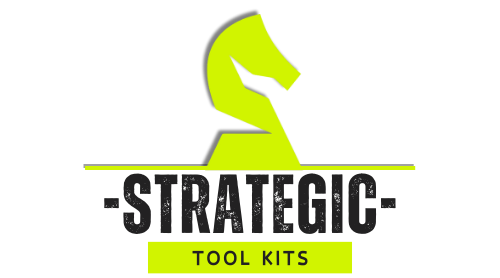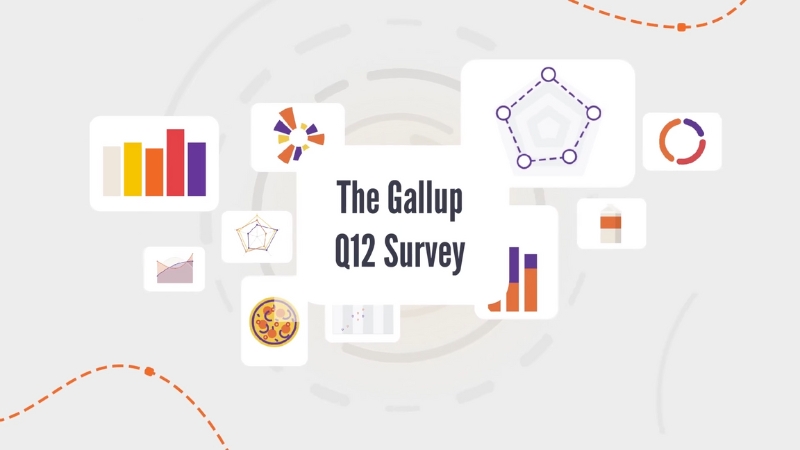Employee engagement is one of those terms that leaders hear constantly, but many underestimate its true business impact. Engagement isn’t about whether employees seem happy or smile during meetings; it’s about how emotionally connected they are to their work and their organization. And that emotional connection has measurable consequences.
According to Gallup’s 2024 State of the Global Workplace Report, only 23% of employees worldwide are engaged at work. The majority are either “not engaged” (quietly disconnected) or “actively disengaged” (disruptive and unhappy).
The financial cost of disengagement is staggering: Gallup estimates it drains $8.8 trillion in lost productivity annually, equal to about 9% of global GDP. On the other hand, companies with highly engaged teams see 21% higher profitability, 17% higher productivity, and up to 59% lower turnover.
So how can businesses measure engagement effectively and do something about it? That’s where the Gallup Q12 survey comes in. It’s a research-backed, practical tool developed over decades of employee engagement studies.
More than just a survey, Q12 provides a roadmap for managers to identify engagement gaps and take actionable steps to build stronger, more committed teams.
What Is the Gallup Q12?
The Gallup Q12 is a set of 12 carefully designed questions that measure the core elements of employee engagement. It was developed after Gallup analyzed millions of employee interviews across industries and countries to identify the strongest predictors of performance, retention, and job satisfaction.
Unlike generic employee satisfaction surveys, the Q12 doesn’t ask about perks, superficial happiness, or vague feelings. Instead, it zeroes in on fundamental needs that employees must have met to feel engaged.
These questions cover areas such as clarity of expectations, recognition, growth opportunities, relationships at work, and whether employees feel their opinions matter.
Here are the 12 Gallup Q12 questions (verbatim):
These questions may look simple, but decades of validation show they are powerful predictors of engagement and performance. Gallup refers to them as the “12 Elements of Great Managing.”
Why Q12 Works: The Science Behind It
The Gallup Q12 is not just another HR survey; its needs are based on rigorous scientific research. Each question is designed to measure a psychological need that, when fulfilled, drives engagement and high performance.
For example:
- Questions 1 and 2 (clarity and resources) measure basic needs, the foundation for any job.
- Questions 3 through 6 address individual contributions and recognition, which shape motivation.
- Questions 7 through 10 focus on teamwork and belonging, critical for collaboration.
- Questions 11 and 12 emphasize growth and development, which sustain long-term engagement.
Gallup’s meta-analyses across industries consistently find that higher Q12 scores correlate with:
- Lower absenteeism (by 41%)
- Higher customer satisfaction (by 10%)
- Reduced safety incidents (by 70%)
- Greater profitability and productivity
What makes Q12 unique is that it connects engagement directly to outcomes that leaders care about, performance, retention, and growth. It doesn’t just measure mood; it measures conditions that actually drive results.
Breaking Down the 12 Questions in Practice

1. I know what is expected of me at work
Clarity is the foundation of engagement. Employees who don’t know what success looks like waste energy guessing. Leaders should set clear, measurable goals and revisit them regularly.
2. I have the materials and equipment I need to do my work right
Frustration grows when employees lack the tools or systems they need. This question highlights infrastructure gaps. Fixing them often has an immediate morale boost.
3. At work, I have the opportunity to do what I do best every day
Engagement soars when people use their strengths. Managers should align roles with employee talents and encourage job crafting where possible.
4. In the last seven days, I have received recognition or praise for doing good work
Recognition doesn’t have to be grand; it just has to be sincere and timely. Lack of recognition is one of the top reasons employees quit. You can easily make your own certificate using free tools.
5. My supervisor, or someone at work, seems to care about me as a person
Employees aren’t machines. Demonstrating genuine care, asking about well-being, a supporting flexibility creates loyalty.
6. There is someone at work who encourages my development
Development is a long-term driver of retention. Employees need mentors or leaders who actively invest in their growth.
7. At work, my opinions seem to count
Feeling heard boosts engagement. Leaders can act by creating channels for feedback and demonstrating follow-through.
8. The mission or purpose of my company makes me feel my job is important
Purpose is a powerful motivator. When employees connect their work to a bigger mission, performance improves dramatically.
9. My associates or fellow employees are committed to doing quality work
Peer accountability matters. A culture of excellence is contagious, and disengagement spreads if not addressed.
10. I have a best friend at work
This may seem unusual, but Gallup research shows that friendships increase collaboration, trust, and retention. Teams with close bonds outperform others.
11. In the last six months, someone at work has talked to me about my progress
Regular feedback, just annual reviews, drives improvement. Without it, employees stagnate.
12. This last year, I have had opportunities at work to learn and grow
Growth is essential to keep employees engaged long-term. Training, stretch projects, and career planning all matter here.
How to Implement the Gallup Q12
View this post on Instagram
Using Q12 effectively requires more than distributing a survey. Here’s a practical roadmap:
1. Survey Your Employees
Administer the Q12 anonymously to ensure honest answers. Gallup recommends at least annual surveys, though many companies use quarterly pulses.
2. Analyze the Data
Look at overall scores but also drill down by team, department, or role. Patterns often reveal where problems are localized versus systemic.
3. Share Results Transparently
Employees should see that their feedback matters. Sharing results builds trust and signals that leadership is committed to improvement.
4. Prioritize Key Issues
Don’t try to fix everything at once. Focus on the two or three lowest-scoring areas that have the biggest potential impact.
5. Create Action Plans
Work with managers to design specific actions. For example, if recognition scores are low, implement peer-to-peer recognition programs.
6. Train Managers
Managers are the linchpins of engagement. Equip them with skills to give feedback, coach strengths, and build trust.
7. Track Progress Over Time
Engagement is dynamic. Regular measurement helps track whether interventions are working.
Common Pitfalls
- Treating it as an HR project only: Engagement must be owned by leaders at all levels, not just HR.
- Surveying without follow-up: Nothing kills trust faster than asking for input and doing nothing with it.
- Focusing only on low scores: Celebrating strengths is just as important as fixing weaknesses.
- Assuming one-size-fits-all solutions: Engagement strategies should be tailored by team and context.
Case Studies: Q12 in Action

Case 1: A Manufacturing Firm Cuts Turnover
A U.S.-based manufacturer used the Q12 to uncover low scores on “recognition.” Managers implemented daily stand-ups where employees shared wins and gave peer recognition. Within a year, turnover dropped 18% and productivity rose 12%.
Case 2: A Healthcare System Improves Patient Care
A hospital group found low scores on “I have the materials and equipment I need.” Nurses lacked supplies, causing stress and delays. After fixing inventory systems, engagement rose, and patient satisfaction scores improved by 15%.
Case 3: A Tech Company Strengthens Innovation
An IT firm discovered employees didn’t feel their “opinions count.” Leadership introduced monthly innovation forums where staff pitched ideas. Within six months, two employee ideas became new products, boosting morale and revenue.
The Role of Managers in Driving Engagement
Gallup emphasizes that 70% of the variance in employee engagement is attributable to managers. This means that while corporate culture and policies matter, day-to-day experiences with direct supervisors are the single most important driver.
Managers must:
Companies that invest in manager training consistently see higher Q12 scores and better business outcomes.
Linking Q12 to Business Outcomes

Gallup’s meta-analysis of 112,000 teams across 276 organizations in 54 industries and 96 countries found that teams in the top quartile of Q12 scores had:
These aren’t abstract benefits. They translate into real competitive advantage.
Beyond the Q12: Sustaining Engagement Long-Term
While Q12 is powerful, it’s not a magic bullet. Engagement requires ongoing effort. Businesses should:
Engagement is a moving target, especially as generations, technology, and work patterns evolve. Companies that continuously invest in it stay ahead.
Conclusion
@vincentsanderson the research is gallup q12 questionnaire if you want to read more about it. #managementskills #leadership #leadershipdevelopment #management #work #manager ♬ original sound – Vincent Sanderson
The Gallup Q12 is more than a survey; it’s a framework for building stronger, more resilient, and higher-performing teams. By focusing on the fundamental needs of employees, Q12 identifies the levers that truly matter for engagement and productivity.
Leaders who adopt Q12 must commit not just to measurement but to action: clarifying expectations, recognizing contributions, fostering belonging, and investing in growth. When employees feel valued, equipped, and connected to purpose, engagement rises, a nd so do business outcomes.
In a world where disengagement costs trillions, using Gallup Q12 to boost employee engagement is not just an HR initiative; it’s a business necessity.

